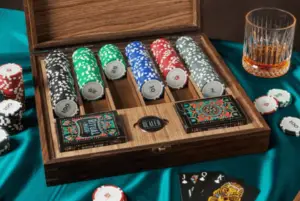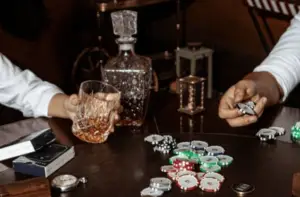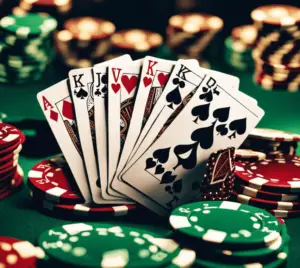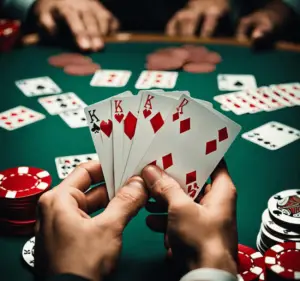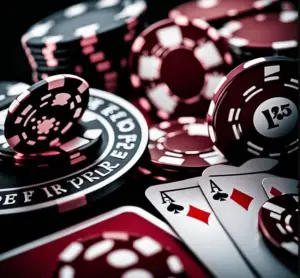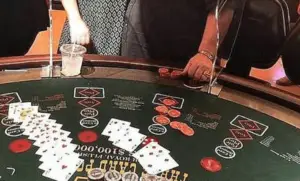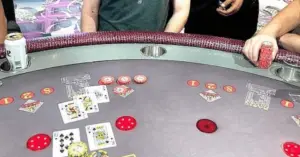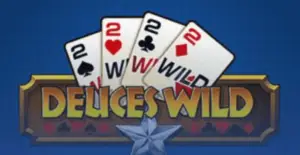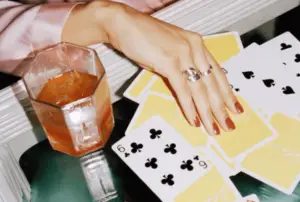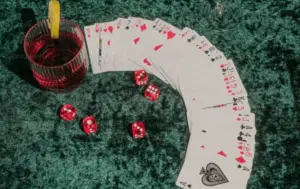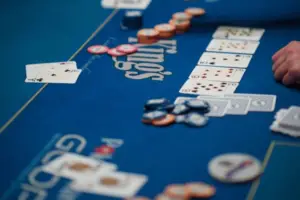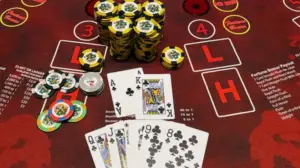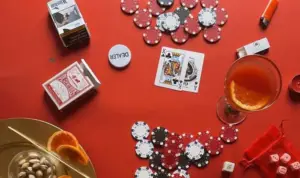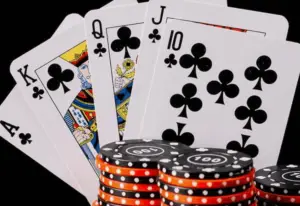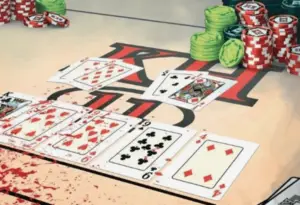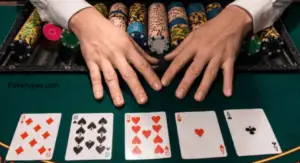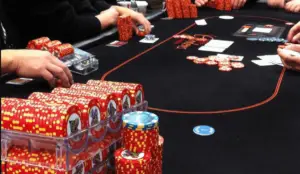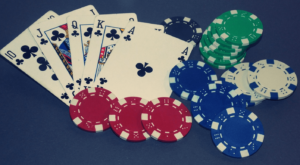In poker, understanding playing styles is crucial for success at the table. The two fundamental approaches are tight and loose play, which primarily differ in hand selection and risk tolerance.
A tight player typically plays fewer hands but focuses on premium starting cards, while a loose player engages with a wider range of hands and takes more chances.
The effectiveness of each style often depends on table dynamics and opponent tendencies. For example, in a $1/2 No-Limit Hold’em game, a tight player might play only 15-20% of hands, while a loose player could play 40% or more.
These styles are further modified by whether a player is aggressive (frequently betting and raising) or passive (mostly calling and checking).
Modern poker theory suggests that loose-aggressive (LAG) players can be more profitable in the long run, though they face higher variance, while tight-aggressive (TAG) players typically maintain more consistent results with lower risk.
Understanding these dynamics helps players adapt their strategy and exploit opponents’ tendencies more effectively.
Tight vs Loose Playing Styles
To begin with, we will examine tight and loose styles in detail.
1. Tight Playing Style
Tight players are known for their selective and disciplined approach, typically playing only 15-20% of their hands.
These players focus on premium starting hands like high pairs, ace-king, and ace-queen, while showing remarkable patience at the table. They carefully consider their table position and tend to be more active in late positions where they have better information about their opponents’ actions.
Characteristics of Tight Players
A tight player demonstrates remarkable discipline by folding most hands pre-flop and waiting for strong starting cards. They often play in a calculated manner, making decisions based on solid hand values rather than gut feelings.
For example, in a $1/2 No-Limit Hold’em game, tight players might only play 10-15 hands per hour, compared to the average player’s 25-30 hands.
Advantages of Playing Tight
The tight strategy offers several benefits, including lower variance and more consistent results. Players using this style build a strong table image, making their bets more credible and causing opponents to respect their raises.
This reputation allows them to steal pots effectively when they do decide to bluff. Additionally, tight players typically face simpler decisions post-flop since they’re usually working with a stronger starting hand.
Disadvantages of Playing Tight
The main drawback of tight play is the limited action and potentially smaller winnings from individual sessions. Tight players can become predictable, making them vulnerable to observant opponents who might exploit their tendencies.
They might also miss profitable opportunities with marginal hands and can struggle to build pots when they do have premium holding.
2. Loose Playing Style
Loose players engage with a wider range of starting hands, typically playing 40% or more of their dealt card. These players maintain an unpredictable image and are willing to enter pots with various hand combinations, making them challenging opponents to read.
Characteristics of Loose Players
A loose player demonstrates flexibility in hand selection and often participates in more pots than the average player. They’re typically more comfortable playing speculative hands like suited connectors and small pairs. These players tend to create action at the table and are more likely to engage in bluffs and semi-bluffs.
Advantages of Playing Loose
The loose style allows players to win pots without having the best hand through aggressive betting and bluffing. They can exploit tight players’ tendencies to fold and have more opportunities to build big pots when they hit strong hands.
Famous players like Phil Ivey and Tom Dwan have demonstrated how loose play can lead to massive wins in high-stakes games.
Disadvantages of Playing Loose
Playing loose requires exceptional skill and can lead to higher variance. These players face more difficult decisions post-flop and risk larger losses when their aggressive plays backfire.
In games with a significant rake, loose players might win more pots but earn less overall profit due to paying more rake on smaller pots. Additionally, loose players often struggle against observant opponents who can exploit their wide playing ranges.
Aggressive vs Passive Play
Now we’ll talk about aggressive and passive plays.
1. Tight-Aggressive (TAG) Players
ATAG strategy involves playing a selective range of hands with consistent aggression. These players typically enter pots with around 15-20% of their starting hands and maintain pressure through strategic betting.
Famous players like Daniel Negreanu have demonstrated the effectiveness of this style, particularly in full-ring games.
Strategy and Effectiveness
TAG players focus on premium holdings and position awareness, often raising 3-4 times the big blind when entering pots. They maintain control through calculated aggression, making it difficult for opponents to put them in specific hands.
For example, in a $2/$5 game, a TAG player might open-raise to $15-20 from a late position with hands like pocket pairs and strong ace-high combinations.
Pros and Cons
The main advantage of TAG play is its lower variance and consistent profitability. These players build a strong table image that allows their bluffs to be more effective.
However, they can become predictable and miss value opportunities with marginal hands. Statistical data shows TAG players typically maintain a more stable bankroll but might have lower maximum winning sessions compared to LAG players.
2. Loose-Aggressive (LAG) Players
LAG players embrace a high-variance style, playing 40% or more of their hands with constant aggression. Players like Tom Dwan have made millions utilizing this approach in high-stakes games.
Strategy and Effectiveness
These players apply continuous pressure through frequent betting and raising, often playing speculative hands like suited connectors and small pairs.
Their unpredictable nature makes them difficult opponents. A successful LAG player might play 35-45% of hands and maintain aggression on multiple streets.
Pros and Cons
The LAG play offers opportunities for larger wins and better pot control. However, it requires exceptional post-flop skills and carries higher risk.
For instance, in Dwan’s famous million-dollar bluff against Phil Ivey, he demonstrated both the potential rewards and risks of this style.
3. Tight-Passive Players
Tight-passive players, often called “rocks,” combine selective hand choices with cautious post-flop play. This style is generally seen in newer players transitioning from beginner to intermediate levels.
Strategy and Limitations
These players typically enter pots with only the top 10-15% of hands but prefer calling to raising. They often check and call post-flop, even with strong holdings.
This defensive approach makes them vulnerable to aggressive opponents who can steal pots through consistent pressure.
Why Passive Play is Less Effective?
Passive play surrenders initiative and allows opponents to control pot size. Statistics show tight-passive players struggle to maintain profitable win rates in modern games, particularly in tournament formats where blinds increase regularly.
4. Loose-Passive Players
Often called “calling stations,” loose-passive players represent the most exploitable style in poker. They play many hands but rarely take aggressive actions.
Strategy and Limitations
These players typically play 50% or more of their hands but prefer calling to raising. They often make the mistake of calling multiple streets with marginal holdings, hoping to catch better hands. This style leads to consistent losses in most games, especially against skilled opponents.
Challenges of Loose-Passive Play
The main challenge is the inability to fold marginal hands and the tendency to pay off stronger holdings. Studies show loose-passive players typically lose at the highest rate among all playing styles, with some statistics indicating average losses of 2-3 big blinds per 100 hands in cash games.
Profitability Analysis
Comparing the Profitability of Different Styles
Statistical analysis shows that aggressive playing styles consistently outperform passive approaches in terms of long-term profitability. A good loose-aggressive player (LAG) typically generates more profit than other styles, though they face higher variance in their results.
Statistical Analysis of Tight vs Loose Play
In modern poker games, tight-aggressive players (TAG) typically win at a rate of 2-3 big blinds per 100 hands, while successful LAG players can achieve rates of 4-5 big blinds per 100 hands.
However, unsuccessful loose players can lose at significantly higher rates, sometimes exceeding 10 big blinds per 100 hands.
Impact of Aggression on Profitability
Aggressive play provides two paths to winning: having the best hand and forcing opponents to fold better hands. For example, in a $1/2 No-Limit game, aggressive players can win small pots of $20-30 through consistent pressure, even without premium holdings
Factors Affecting Profitability
Skill Level
The relationship between style and profit heavily depends on player skill. The hierarchy typically follows:
- Skilled LAG player
- Skilled TAG player
- Average TAG player
- Tight-passive player
- Unskilled LAG player
Game Dynamics
Table conditions significantly impact style effectiveness. Key factors include:
- Position at the table
- Player types present
- Stack sizes
- Tournament vs. cash game format
Opponent Tendencies
Understanding and exploiting opponent patterns is crucial for profitability. Professional players like Phil Ivey and Daniel Negreanu demonstrate this by adjusting their style based on:
- Opponent skill level
- Table image
- Betting patterns
- Psychological factors
For maximum profitability, players should adapt their style based on these factors rather than rigidly adhering to one approach. The most successful players can switch between tight and loose play while maintaining aggression as their core strategy.
How to Adjust Your Playing Style?
Successful poker players excel at reading opponents and adjusting their strategy accordingly. When analyzing the table, focus on key indicators like bet sizing, timing tells, and player tendencies.
For example, an instant bet often signals strength, while hesitation followed by betting typically indicates a strong hand. To adapt effectively, observe how players handle different situations – some might be overly aggressive in early positions while others show passive tendencies post-flop.
The key to unpredictable play lies in balanced ranges and mixed strategies. Top players like Phil Ivey demonstrate this by maintaining consistent bet sizing regardless of hand strength and carefully studying opponents’ reactions. When incorporating deception, consider varying your play based on position and table dynamics.
For instance, if you’ve established a tight image, occasionally mix in well-timed bluffs from a late position. In aggressive games, tighten your starting hand requirements, while in passive games, you can profitably play more speculative hands.
The most successful players remain flexible, adjusting their style based on specific table conditions rather than sticking to a rigid approach.
Advanced Concepts in Playing Styles
Position plays a crucial role in determining the effectiveness of tight and loose playing styles. In an early position, tight play becomes more profitable as you have less information about opponents’ actions.
Statistics show that players in late positions can profitably play up to 40% more hands compared to early positions while maintaining a positive win rate.
For example, a button raise with suited connectors shows a higher expected value than the same hand played from under the gun. Bankroll management requirements vary significantly between playing styles.
Tight-aggressive players typically need a smaller bankroll due to lower variance, often requiring 20-25 buy-ins for cash games.
In contrast, loose-aggressive players should maintain 40-50 buy-ins to handle larger swings. This difference reflects the higher risk-reward nature of loose play.
The distinction between tournament and cash game strategy is particularly important when considering playing styles. In tournaments, stack depths are generally shallower, making tight play more effective in the early stages.
Cash games allow for deeper stacks and more post-flop play, where loose-aggressive strategies can thrive. Tournament players face increasing blinds and ICM pressure, requiring them to adjust from tight to more aggressive play as the event progresses.
For instance, while a tight-aggressive style might open 42% of hands from the button in cash games, this increases to 53% in tournaments due to ante pressure.
This fundamental difference in structure means successful players must adapt their style based on the format they’re playing.
Conclusion
Success in poker demands exceptional adaptability and a well-rounded approach that combines elements of both tight and loose play.
Top professionals like Phil Ivey and Daniel Negreanu demonstrate how mastering multiple styles leads to consistent results across different game formats.
The key lies in developing a personal strategy that can shift between playing 15-20% of hands in tight situations to 40% or more when table dynamics favor loose play.
By maintaining flexibility in your approach and carefully observing opponent tendencies, you can maximize profitability while minimizing vulnerability to exploitation.
Remember that the most successful players aren’t wedded to a single style but rather adapt their strategy based on real-time game conditions and opponent behaviors.






